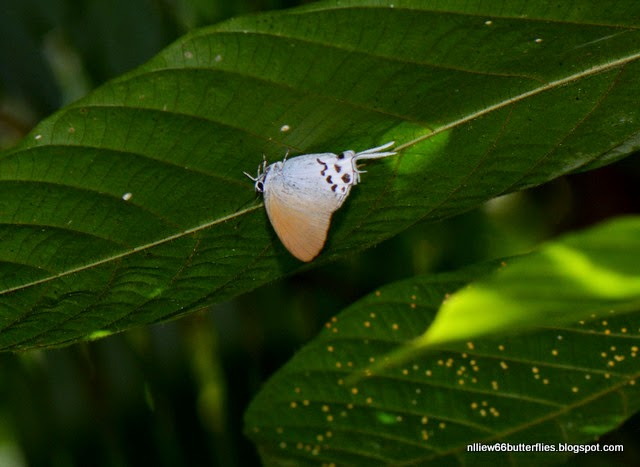Secretive and has a tendancy to hide under broad leaves, this is a habitant of the sun-speckled understorey in undisturbed forests. It ressembles the Common Imperial, C. freja and but has shorter tails.
Habitat indicator
RSP
|
WV
|
PG
|
VF
|
FTR
|
SC
|
LWDF
|
LWPF
|
LMEF
|
UMN
|
MN
|
x
|
Frequency observation chart: (S marks the usual occurence, H marks an unusually high occurence, F for first record)
2013
|
2014
| ||||||||||
Nov
|
Dec
|
Jan
|
Feb
|
Mac
|
Apr
|
May
|
Jun
|
Jul
|
Aug
|
Sep
|
Oct
|
| S2(F) | |||||||||||
2014
|
2015
|
||||||||||||
Nov
|
Dec
|
Jan
|
Feb
|
Mac
|
Apr
|
May
|
June
|
Jul
|
Aug
|
Sep
|
Oct
|
Nov
|
Dec
|
S2
|
S3
|
||||||||||||
2016
|
|||||||||||
Jan
|
Feb
|
Mac
|
Apr
|
May
|
Jun
|
Jul
|
Aug
|
Sep
|
Oct
|
Nov
|
Dec
|
S2
|
|||||||||||
2017
|
|||||||||||
Jan
|
Feb
|
Mac
|
Apr
|
May
|
Jun
|
Jul
|
Aug
|
Sep
|
Oct
|
Nov
|
Dec
|
Above photos 06 June 2014 @ 15:16
* * * * *
The male has a distinctive forewing brand made of nacreous scales visible in the above pictures. They are larger than the females. 03 July 2016 @ 15:00







Nice to meet you, this is my first contact with you, although I follow from a while your blog.
ReplyDeleteCongratulation for the spot of a so unusual and not so well known butterfly.
Thanks. It's true that this is not a very common butterfly and they seem to be seasonal in certain localities
ReplyDelete